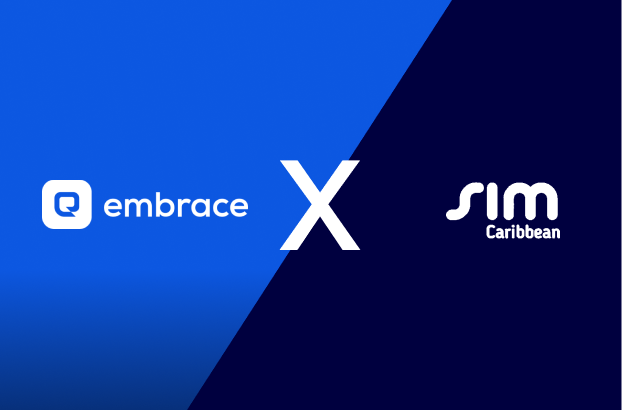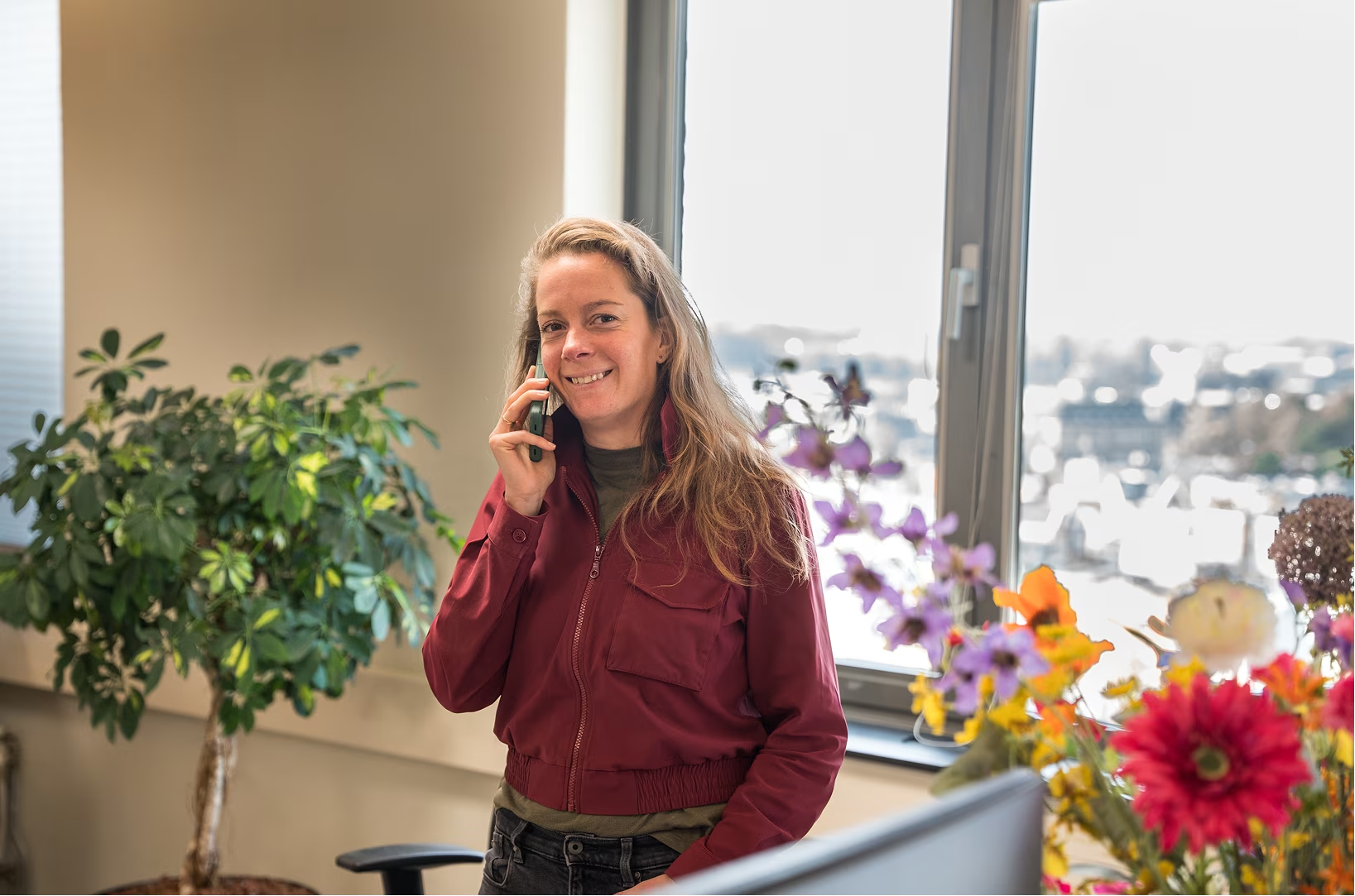In 2019, healthcare organization Present used a new social intranet. The biggest goal here: connection. Did it come? And what else did the intranet provide? We asked Koen Wemmenhove, communication advisor at Present.
Present has residential care centers at five locations in the Alblasserwaard and Vijfheerenlanden, just below Utrecht. In addition, it provides home care and rents out apartments. Of the approximately 600 employees, around 90 percent are healthcare providers. The rest are in the office, in the kitchen or cleaning.
Koen Wemmenhove is a communication advisor at Present. He worked for years as an advisor at Embrace, where he was in frequent contact with healthcare organizations and became increasingly interested in that industry. In 2018, he made the switch.
Koen is in the car when we speak to him, with a box full of corona tests. “They need to get to the lab as soon as possible. We made a schedule for it; it's my turn on Wednesday. It's nice to be able to support our people in this way. '
How do you connect 600 employees?
After starting in his new position, Koen quickly knew what to get started: “Present had a Stone Age intranet. And therefore no possibility to share information or communicate internally, except via email. But this was mainly about the work content; there was no place for 'warmer information'. '
With his background, Koen naturally knew what the ideal solution would be: a social intranet. But he didn't rush to get his old employer in: 'I wanted to make it a fair process, that's why we invited two providers. Within a week and a half, both had set up an exemplary environment for us. '
'Care colleagues don't have to worry about who they ask their question to, they always get answers'
Koen put a group of care and office colleagues to work with specific tasks in the test environment. “User-friendliness was an important criterion for us. I had the test panel look for colleagues or specific care information. In the end, they rated both platforms, with Embrace scoring just a little higher. '
For Present, it was crystal clear what the new intranet should achieve: “Connection. We wanted to be able to share stories in order to create mutual understanding and let people help each other. The second goal was simply to keep everyone informed about what's going on within the organization. '

The user as a starting point
A modern intranet offers an endless number of functionalities. The one you use depends largely on what you want to achieve with your intranet. At Present, this resulted in a platform that is simple: “The users, and what they need, are the starting point. That's why we only use a few features. When other needs arise, we can always add things. The intranet is now exactly in line with how we work. '
The new social intranet was named PIP — short for Present Information Platform — and a dog like personification. The commissioning was not preceded by an extensive presentation or information session. That was a conscious choice: “An intranet must prove itself, and I was confident in that. It's especially important to check if it works for everyone after a few weeks or months. '
Questions as a basis for the intranet
On PIP, people find news reports and colleagues find each other. The platform is a demand-oriented intranet: asking and answering questions is the starting point. To do this, Koen collected the most frequently asked questions about P&O, ICT and care-related issues, which formed the basis for the platform. The most important group on the intranet is called Ask PIP your question. Koen is on top of that.
“My goal is to have a question answered within a day, no matter who it is addressed to. Sometimes it's enough to steer the questioner in the right direction. Care colleagues don't have to worry about who they ask their question to, they always get answers. '
Koen himself acts more or less as the hub of the intranet. It is a role that he likes to play and that suits him well. “When a question comes in, I usually know if the person it's intended for often visits the intranet. If not, I'll make sure he or she becomes active after all. I also publish a lot, but I also encourage colleagues to do it themselves. '
Intranet in times of crisis
In a healthcare organization, most of the employees do not sit at a computer. Koen sees in the statistics that almost half of intranet use occurs on mobile devices. “When we started, I made sure everyone knew how to put the intranet on your mobile phone. Our users are not about receiving notifications all day long, but mainly about being able to access the intranet when they need it. '
During the corona crisis, intranet use at Present rose explosively. “People would like to know about protocols or how a corona spread occurred at another location. In Google Analytics, in the first months after the outbreak of the pandemic, I saw the number views go one and a half times, and again in September and October. '
“In the first months after the outbreak of the pandemic, I saw the number of views go by times one and a half”
Keeping user statistics is a good way for Koen to discover which content works. “That does not mean that I then only post the type of articles that work well, but it does mean that I consciously combine business and more human interest messages. If you only broadcast how to do the work on an intranet, you will lose your audience. '
The role model of the visible driver
Directors and managers are role models on every intranet. When they speak up, they encourage employees to do the same. In practice, however, things don't go that way everywhere. Present is doing well, says Koen:
“Janneke, our director, was behind the intranet from the start. She is active, engages in conversations with colleagues and responds to messages. That's really nice, she's clearly visible. And I don't have to ask her to speak up, she does that on her own. She sometimes surprises me with that, too. '

PIP is alive
In the first year that Present has been using PIP, user reactions have been positive. They see the point of the intranet and are happy with it. Last week, one of Koen's colleagues came up with a self-knitted PIP, a sign for him that the intranet is alive.
“People say they like to be aware of what's happening. When someone tells me that, I'm happy. Then I know that the intranet does what it needs to do. '
No protocols and communication plans
Because Koen has been assisting organizations in using an intranet for years, he knew that pre-set objectives sometimes remain somewhat abstract. Now that it was his turn, he opted for a more pragmatic approach: “When starting a process, people often want to lay down all the rules of conduct and the intranet policy in protocols and communication plans. I would say: limit it to one piece of A4, specify your guidelines and how you want to use the intranet, and go do. '
Even when it comes to choosing a supplier, Koen has well-founded advice: “Any provider can create a trial environment for you. Ask about three parties to create such an environment for you and you can test what works best for yourself. And always leave that assessment to your employees, the people who are going to use the intranet themselves — not to a hired ICT advisor. '
Connection: a social intranet works
Connection allows organizations to function better and employees to work together more comfortably. Present had an urgent need for it even before the outbreak of the pandemic, and even more afterwards. The new social intranet turned out to be the tool that made that connection possible.
Koen: “People like to see that it is not only difficult at their own location and that they are not alone. The moment there is a corona outbreak at one of our locations, you will see messages of support coming from all sides on the intranet. For me, that's a sign of connection, and therefore proof that the intranet works. '




